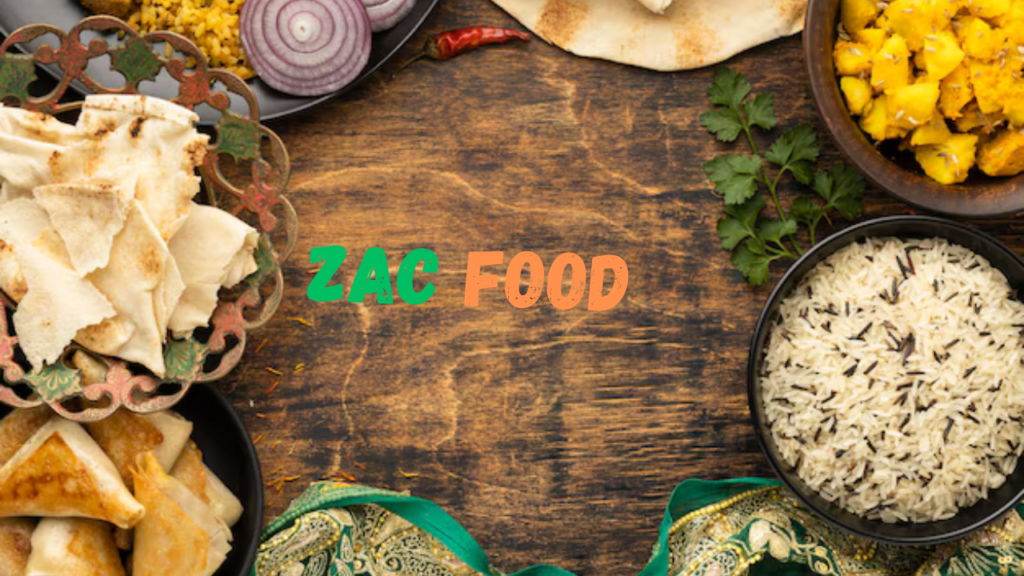Indian food is known for its vibrant flavors, aromatic spices, and diverse dishes that tantalize the taste buds. From creamy curries to sizzling tandoori meats, Indian cuisine has captured the hearts of food lovers worldwide. But as much as we enjoy these delicious meals, many people wonder, “Is Indian food healthy?” In this article, we’ll explore the health aspects of Indian food, uncovering the truth behind this popular cuisine.
2. The Diversity of Indian Cuisine
One of the first things to understand about Indian food is its incredible diversity. India is a vast country with numerous regions, each offering its own unique cuisine. The food in North India is different from that in South India, and the same goes for East and West.
- Different regional cuisines across India: Each region in India has its own distinct cooking style, ingredients, and flavors. For example, the food in Punjab is rich and hearty, often featuring creamy dishes like butter chicken and paneer. In contrast, South Indian cuisine is known for its lighter dishes, such as idli, dosa, and sambar, which are often fermented and considered good for digestion.
- Variety in ingredients, spices, and cooking methods: Indian food uses a wide array of ingredients, from grains like rice and wheat to legumes, vegetables, and meats. The cooking methods also vary, from slow-cooking curries to grilling and baking. This diversity means that Indian food can range from very healthy to indulgent, depending on how it’s prepared.
- Common misconceptions about Indian food: Many people outside of India might think that all Indian food is oily, spicy, or heavy. However, this is far from the truth. Traditional Indian meals often focus on balance, with a good mix of grains, proteins, and vegetables, seasoned with beneficial spices.

3. Nutritional Benefits of Indian Food
When discussing “Is Indian food healthy?” it’s essential to highlight the many nutritional benefits that this cuisine offers.
3.1 Use of Whole Grains:
- Importance of whole grains like rice, wheat, and millet: Whole grains are a staple in Indian cuisine. Whether it’s rice in the South or wheat in the North, these grains are rich in fiber, vitamins, and minerals.
- Health benefits of whole grains: Whole grains are known for their health benefits, including promoting heart health, aiding digestion, and helping with weight management. Dishes like brown rice, chapati, and millet-based meals are common in Indian homes.
3.2 Rich in Vegetables and Legumes:
- The vegetarian aspect of Indian cuisine: A significant portion of Indian food is vegetarian, focusing on vegetables and legumes as primary ingredients. This makes Indian food naturally rich in vitamins, minerals, and plant-based proteins.
- Nutrient-rich vegetables and legumes used in Indian dishes: Vegetables like spinach, cauliflower, and okra, along with legumes such as lentils, chickpeas, and kidney beans, are packed with essential nutrients like iron, potassium, and folate. These foods support heart health, boost immunity, and improve digestion.
3.3 Spices and Their Health Benefits:
- Overview of commonly used spices like turmeric, cumin, coriander, and more: Indian food is synonymous with spices, each adding not just flavor but also health benefits. Spices like turmeric, cumin, coriander, and ginger are staples in Indian kitchens.
- Anti-inflammatory and antioxidant properties of these spices: Turmeric, for example, contains curcumin, a powerful anti-inflammatory and antioxidant compound. Cumin aids digestion, while coriander helps regulate blood sugar levels. The use of such spices makes Indian food not just tasty but also health-promoting.
3.4 Healthy Fats in Indian Cooking:
- Use of ghee, coconut oil, and mustard oil: Indian cooking often uses ghee (clarified butter), coconut oil, and mustard oil. While these fats have been debated, when used in moderation, they can be part of a healthy diet.
- Health benefits of these fats: Ghee is rich in butyrate, a fatty acid that promotes gut health. Coconut oil is known for its medium-chain triglycerides (MCTs), which can boost metabolism. Mustard oil, with its high content of omega-3 fatty acids, supports heart health.
4. The Role of Ayurveda in Indian Cooking
Ayurveda, the ancient Indian system of medicine, plays a significant role in how food is prepared and consumed in India.
- Introduction to Ayurveda and its influence on Indian food: Ayurveda emphasizes the importance of eating according to one’s body type and the seasons. It advocates for balanced meals that nourish the body and mind.
- The concept of balanced meals (Sattvic, Rajasic, and Tamasic foods): Ayurvedic principles classify food into three categories: Sattvic (pure and wholesome), Rajasic (stimulating), and Tamasic (heavy and lethargic). A Sattvic diet, rich in fruits, vegetables, whole grains, and dairy, is considered the most beneficial for overall health.
- Ayurvedic principles for healthy eating: Ayurveda promotes mindful eating, portion control, and choosing foods that are fresh, seasonal, and locally sourced. This approach helps maintain a healthy digestive system, balanced energy levels, and overall well-being.
5. Potential Downsides of Indian Food
While Indian food has many health benefits, there are some potential downsides, especially if the food is not prepared mindfully.
5.1 High Caloric Content:
- Caloric density in certain Indian dishes: Some Indian dishes, particularly those cooked with cream, butter, and sugar, can be high in calories. Popular dishes like butter chicken, biryani, and rich curries can contribute to weight gain if consumed in large quantities.
- How portion control can be a challenge: Indian food is often served in generous portions, which can make it easy to overeat. Practicing portion control is essential to avoid consuming too many calories.
5.2 Use of Refined Oils and Excessive Frying:
- The downside of using refined oils and deep frying: While traditional Indian cooking often uses healthy fats like ghee and mustard oil, modern recipes sometimes rely on refined oils, which are less healthy. Additionally, dishes that involve deep frying, such as samosas and pakoras, can be high in unhealthy trans fats.
- Health risks associated with these cooking methods: Regular consumption of fried foods can increase the risk of heart disease, obesity, and other health issues. Opting for healthier cooking methods, like baking or grilling, can help mitigate these risks.
5.3 Excessive Use of Salt and Sugar:
- Salt content in pickles and chutneys: Indian pickles and chutneys are often high in salt, which can contribute to high blood pressure if consumed excessively.
- The presence of sugar in sweets and desserts: Indian sweets, such as gulab jamun and jalebi, are often loaded with sugar. While delicious, these desserts should be enjoyed in moderation to avoid the negative health impacts of excessive sugar consumption.
6. Comparing Traditional Indian Food with Restaurant and Processed Versions
The healthiness of Indian food can vary significantly depending on where and how it’s prepared.
6.1 Traditional Indian Home-Cooked Meals:
-
- Healthiness of traditional Indian meals: Traditional Indian meals are often balanced and nutritious, made with fresh ingredients and minimal processing. Home-cooked meals typically focus on wholesome, natural ingredients and are cooked in a way that preserves their nutritional value.
- Balance of nutrients in home-cooked food: A traditional meal might include whole grains (like chapati or rice), a protein source (like lentils or chicken), vegetables, and a small amount of healthy fat. This balance ensures a nutrient-dense meal.
6.2 Restaurant Indian Food:
-
- How restaurant versions differ from homemade: Indian food in restaurants is often richer and heavier than home-cooked versions. Restaurants may use more oil, butter, and cream to enhance the flavor and richness of dishes, which can increase the calorie content.
- Common unhealthy practices in restaurant cooking (e.g., heavy use of cream and butter): To cater to taste preferences, restaurant food often includes added fats and sugars, making it less healthy than homemade versions. Eating out frequently can lead to excessive calorie intake and potential health issues.
6.3 Packaged and Processed Indian Foods:
- The rise of ready-to-eat Indian meals: Packaged and processed Indian foods have become increasingly popular for their convenience. However, these products often contain preservatives, high levels of sodium, and unhealthy fats.
- Nutritional concerns with processed Indian foods: Processed foods, including ready-to-eat Indian meals, often lack the nutritional value of freshly prepared dishes. They can be high in calories, low in essential nutrients, and contain unhealthy additives.
7. Tips for Making Indian Food Healthier
If you love Indian food but want to ensure it’s part of a healthy diet, here are some tips to consider:
7.1 Cooking Methods:
Healthier cooking techniques (e.g., grilling, steaming): Instead of frying, try grilling or steaming your food. For example, tandoori chicken is marinated and grilled, making it a healthier option than fried chicken dishes.
7.2 Ingredient Substitutions:
Healthier alternatives for common ingredients: You can make Indian dishes healthier by using ingredient substitutions. For instance, use low-fat yogurt instead of cream in curries or replace refined oils with healthier options like olive oil or mustard oil.
7.3 Mindful Eating:
Importance of portion control and balance: Practicing portion control and balancing your plate with a mix of grains, proteins, and vegetables can help you enjoy Indian food without overindulging.
7.4 Incorporating More Vegetables and Grains:
How to increase the nutritional value of your meals: Add more vegetables to your curries, stir-fries, and side dishes. Incorporating whole grains like brown rice or quinoa instead of white rice can also boost the nutritional content of your meals.
8. The Verdict: Is Indian Food Healthy?
So, is Indian food healthy? The answer is a resounding yes, but with some considerations. Indian food offers a wealth of health benefits, thanks to its use of whole grains, vegetables, legumes, and beneficial spices. However, like any cuisine, it’s important to be mindful of portion sizes, cooking methods, and ingredient choices.
- Summary of the health benefits and potential downsides: While Indian food is nutritious and flavorful, some dishes can be high in calories, fats, and sugars, especially when eaten in large portions or when prepared in restaurants.
- Importance of moderation and balance: Enjoying Indian food as part of a balanced diet is key. By making healthy choices, such as opting for grilled over fried, and adding more vegetables to your meals, you can indulge in Indian cuisine while maintaining a healthy lifestyle.
- Final thoughts on enjoying Indian food as part of a healthy diet: Indian food can be both delicious and healthy when prepared mindfully. By understanding the nutritional aspects and making smart choices, you can enjoy all the wonderful flavors of Indian cuisine without compromising your health.
Read More: Cheese Lovers Unite: Top Street Foods Filled with Queso
FAQs
Which Indian food is healthiest?
Is Indian food good for dieting?
Is eating Indian curry healthy?
Is Indian food high in cholesterol?
Conclusion
In conclusion, Indian food is a flavorful and nutritious cuisine that can be a healthy part of your diet. With its variety of spices, whole grains, vegetables, and legumes, it offers numerous health benefits. However, moderation is key, especially when it comes to calorie-dense dishes and restaurant meals. By cooking at home, using healthier ingredients, and practicing mindful eating, you can enjoy the best of Indian food while keeping your diet on track.


